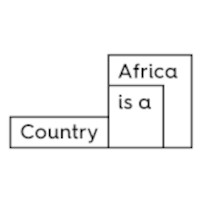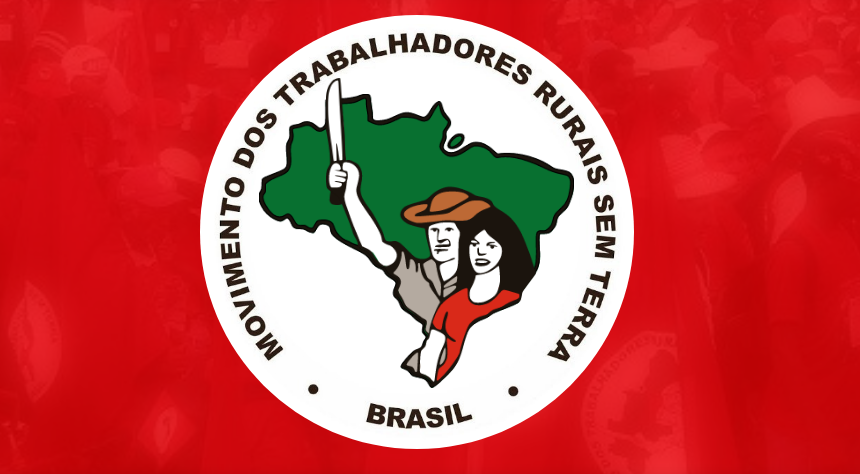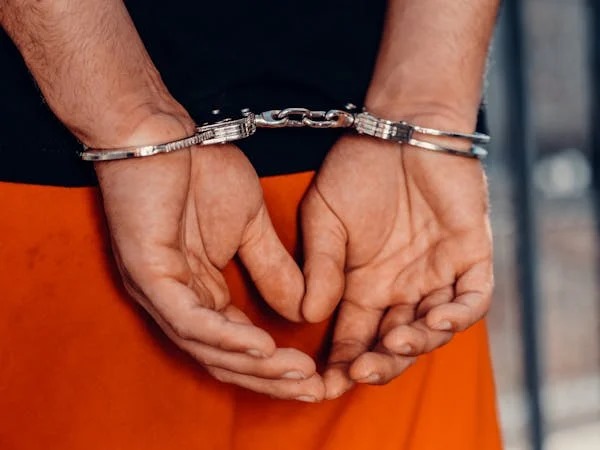2023 marks fifty years since the Durban Strikes, when Black South Africa workers inspired the fight for trade unions and invigorated the struggle against the racial dictatorship.
A group of striking workers from Consolidated Textile Mill in Durban in 1973. (David Hemson Collection, University of Cape Town Libraries).
On January 9, 1973, 2,000 Black workers at Coronation Brick & Tile in Durban downed tools and helped launch the most important workplace action in the long struggle against apartheid. Over the next two months, upwards of 100,000 Black and Indian workers in 150 factories and workshops joined what quickly became known as the Durban Strikes. In doing so, they changed the course of South Africa and demonstrated that ordinary Black people had tremendous power when they acted together in perhaps the one arena that the apartheid regime could not crush, the workplace.
Before this strike wave shut down South Africa’s third largest city and most important port, many people inside and outside of the country despaired because they feared that the struggle was dead. They had good reason because, from the Sharpeville Massacre in 1960 to the Treason Trials of 1964, the white supremacist regime deployed ferocious repression that largely eliminated anti-apartheid forces inside the country. Those activists not banned, imprisoned, killed, driven underground, or silenced went into exile. Parties were banned. Protest was criminalized. Subsequently, a so-called “quiet decade” followed, which suggested that repression worked.
After the Durban Strikes, many more Black workers—which is to say Africans, Coloreds, and Indians as Steve Biko and the Black Consciousness Movement defined “Black”—started to strike and unionize on a scale never before seen. From the mid-1970s through the early 1990s, Black workers organized, unionized, and went on strike. The fall of apartheid did not occur until 1994, but the situation had irrevocably changed because South Africa’s working-class had awakened.
That strikes were workers’ most effective weapon long has been understood. About 60 years earlier, “Big Bill” Haywood, a famed leader in the US-based Industrial Workers of the World, declared, “If the workers are organized, all they have to do is to put their hands in their pockets and they have got the capitalist class whipped.” What was true when Haywood uttered those words around 1910 proved true in 1973: When workers down tools, the economy stops.
Two recent, connected conferences held in Durban, long the busiest port in sub-Saharan Africa and one of the largest in the southern hemisphere, recently were convened to celebrate and commemorate the history of the Durban Strikes. Scholars, activists, artists, and workers also met to consider the relevance of this history, today and moving forward.
When exiled African National Congress leaders met in Morogoro, Tanzania in 1969, they went as far as to suggest that the anti-apartheid movement inside South Africa simply could not be reignited; the struggle would have to be waged primarily outside the country. Meanwhile in Durban—literally at the same moment—more than 2,000 dockers went on strike and shut down the port, the country’s most important connection to the global economy. These dockers, long at the center of the city’s economy and with a century of labor militancy, suffered a(nother) massive wave of retrenchments with hundreds being deported to their rural homelands in KwaZulu and Pondoland. Yet despite this repression, they maintained their secret networks in harborside hostels and on the docks. As discussed in my book Dockworker Power: Race and Activism in Durban and the San Francisco Bay Area, they struck again in October 1972, after organizing for months, to demand raises. While the dockers no doubt inspired Durban’s Coronation Brick workers, in turn they had been inspired by a massive strike of miners in Ovambo in South West Africa (modern Namibia), then controlled by South Africa.
Once the Durban Strikes exploded, it became clear that the political situation had changed. In his introduction to the newly-republished The Durban Strikes:“Human Beings with Souls,” Gerhard Maré rhetorically asks, “Why, along with the 1976 Soweto uprising amongst school children, should the strikes in 1973 be referred to as a turning point in the struggle against apartheid?” In short, the sheer scale and number of strikes and people striking discredited the claim that apartheid was “good” for any Black people. Rather, the entire system of apartheid was unacceptable because it inflicted immense suffering and inequality on the Black majority. In that context, the Durban Strikes were considered revolutionary because Black people had demonstrated they possessed power, particularly at the workplace, and would no longer accept the system.
While the Durban Strikes, undoubtedly, was the largest mass action of Black people in the early 1970s, a great deal was happening in what Tony Morphet later named the “Durban Moment.” This title captured the significance of Durban in the early to mid-1970s despite being considered something of a “backwater.” For one, Steve Biko, then a medical student, lived in Durban where he helped lead the Black Consciousness Movement (BC). So, too, did Professor Richard “Rick” Turner who inspired some white University Natal-Durban students to help organize Black workers into unions. New ideas, new intellectual vision, new activism, new energy. Of course, the government responded with its usual tactics: security forces murdered Biko in 1977 and Turner in 1978 and many other activists were banned. As Maré noted, the uprising of young students in Soweto shifted the energy to the Transvaal (now Gauteng) in 1976.
In January 2023, two conferences in Durban were held to remember this history. The originally planned and larger one was organized by Omar Badsha who helps run South African History Online (SAHO) and was an anti-apartheid activist in his home city of Durban in the 1970s and 1980s. Badsha is also widely known as a photographer who documented countless events and people during the liberation struggle. He was ably assisted by Monique Marks (Durban University of Technology), Debby Bonnin (University of Pretoria), and others.
Were the Durban Strikes spontaneous or not? No consensus was achieved nor was it attempted at either conference. Some believe that the “quiet decade” claim was overblown—that is, resistance continued albeit on a smaller scale and including at work. Some contend that the dockers’ long history and the strike in October 1972 were clearly influential on the much larger strike wave that lasted from January through March 1973. Sadly, since the events occurred 50 years ago and the longevity of Black and working-class people remains limited, few participants in those events are still alive, and only a precious few attended.
Also absent from the discussions was the role of Indian workers in the Durban Strikes or the relationship between Black and Indian workers—which had deeply ruptured due to the brutal Cato Manor riots of 1949. In a very real sense, the fact that African and Indian workers joined the Durban strikes, albeit often striking different employers, was of immense import. Subsequently, and in no small part thanks to Biko’s redefinition of “Black” to include all three oppressed “racial” groups—African, Coloured, and Indian—the 1970s and 1980s witnessed a deepening commitment to “non-racialism.” Alas, such was not the case among Zulu supporters of Gatsha Buthelezi’s Inkatha movement and the brutal civil war that took place between Inkatha on one side and ANC supporters (including in the Congress of South African Trade Unions—COSATU), as well as the United Democratic Front (UDF). Conflicts between Inkatha on one side and unions in COSATU, the UDF, and ANC on the other were repeatedly discussed if no solutions about what to do about ethnic nationalism emerged.
Interestingly, the Durban Strikes don’t neatly fit into the “standard” or mainstream narrative of the history of the struggle against apartheid. In no small part, it’s because they were not led nor even known of in advance by the ANC; at that time, the ANC had very little influence in South Africa though it did have support. As a result, and similar to Steve Biko and the Black Consciousness Movement, the ANC has never been able to co-opt the Durban Strikes and turn it into its version of struggle history that culminated with the election of Nelson Mandela and the party’s electoral dominance since 1994. Perhaps as a result, the ANC has done little to help remember the Durban Strikes. Similarly, COSATU played no role in organizing either conference and none of its leaders, nationally or locally, attended.
The only major public figure to attend the SAHO conference was “Blade” Nzimande, who was an anti-apartheid activist, holds a PhD in Sociology from the University of Natal (now University of KwaZulu-Natal) and currently serves as Minister of Higher Education, Science and Technology. He also is general secretary of the South African Communist Party. Nzimande attended the opening panel and offered some thoughts during the discussion. While many at this conference were not particularly impressed by COSATU in recent decades, including its alliance with the ANC, Nzimande spoke up on behalf of the need to form alliances and the wisdom of doing so, past and present. So, while many believe that COSATU has been weakened by remaining part of the Tripartite Alliance, Nzimande suggested it was only logical, even quoting Lenin to do so. A number of leading activist-intellectuals of the 1970s—who remain so in the 2020s—also offered their thoughts, including Alec Erwin, Gerhard Maré, Omar Badsha, Dave Hemson, Kaizer Thibedi, David and Diane Cooper, and Eddie Webster.
There were multiple book launches, most importantly a new edition of Durban Strikes, the “brainchild” of Rick Turner and written by a handful of Black, Indian, and White activists in the months immediately after the wave. This book remains the only one on the topic and, thus, is invaluable.
A second conference was organized largely by Dave Hemson, a former student of Turner’s and a leading student/union activist in Durban in the 1970s, and sponsored by the Revolutionary Transport Union of South Africa (RETUSA) led by Joseph “JV” Dube.
In a fascinating twist, more than a dozen dockers from the San Francisco Bay Area, members of the International Longshore & Warehouse Union (ILWU) also attended both conferences, particularly the RETUSA one. Left radicals in the ILWU, especially in the Bay Area’s Local 10 which long has been the most militant part of the ILWU and is the only majority African American local. The presence of fourteen current and retired members of ILWU Local 10 shook up the scholarly conference. They were well aware of the history of their union’s activism in the struggle against apartheid. On multiple occasions, from 1962 through 1984, members of Local 10 refused to unload cargo from South Africa to protest apartheid.
Crucially, both conferences commemorated the central role of workers to South Africa’s liberation struggle. The strikes were about better wages, but more importantly they helped mobilize the wider struggle against racism, capitalism, and political oppression. Yet the SAHO conference was far from celebratory because life for most South Africans remains a slog, especially for Black and working-class people—quite reflective about how much has not changed despite the fall of apartheid and rise of a constitutional democracy.
What, if anything, does 1973 mean for South Africans and the rest of us in 2023? Will the Black working-class, once more, come to the rescue, storming the gates of racial capitalism that has metastasized into racialized neoliberalism? Nearly 30 years after apartheid’s end, South African seems at least as precarious as in the early 1990s—and no less defined by race. While the COVID-19 pandemic was horrible, it merely revealed and reinforced the existing fault lines of South African (and global) society.
It is striking that none of the Uber drivers who I rode with in Durban ever had heard of the Durban Strikes though all were born and raised in KwaZulu-Natal. Interestingly, several readily offered that there was a tremendous need for renewed labor activism today given the pervasive poverty in Durban and across the land.
Similarly, when I visited Rick Turner’s grave in the Hazrath Badsha Peer Cemetery and Shrine, with sociologist and activist Eddie Webster and local photographer Rafs Mayet, formerly of the Afrapix collective, the workers who tended to the graves never had heard of Turner. Moreover, they expressed surprise that a white man was buried in a Muslim cemetery even though Turner had converted to Islam to marry Fozia Fisher. Among Durban’s working-class, essentially, there seemed no memory of these vital historical events.
The lack of popular memory notwithstanding, the Durban Strikes were a truly important event in the long struggle against apartheid—demonstrating that Black people had power and that perhaps the working-class’ most powerful tool was to “down tools,” in South African parlance. It reconnected Durban’s Black and Indian working classes and set the country on a new trajectory—one in which millions of Black workers formed independent trade unions and struck, repeatedly, in the 1970s and 1980s.
Not all South Africa(ns) have forgotten the Durban Strikes, nor have some of us from beyond the Rainbow Nation.






